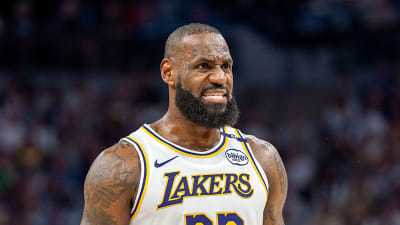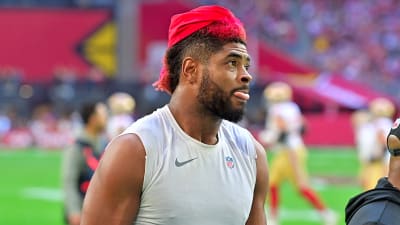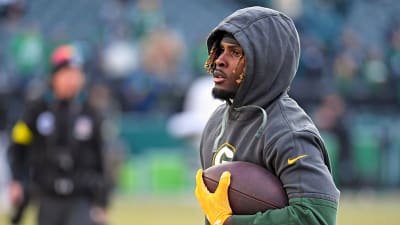
After an embarrassing Wild Card loss to the Houston Texans, it became clear the Los Angeles Chargers had glaring holes on offense.
With Keenan Allen and Mike Williams leaving in 2024, fans were left with a troubling question: Who would be catching passes from Justin Herbert?
Is Ladd McConkey the Answer?
First-year GM Joe Horitz and Head Coach Jim Harbaugh traded up in the 2024 draft to select WR Ladd McConkey at No. 34.
The rookie quickly emerged as the Chargers’ top option. He led the team in receiving yards and was the only wideout to surpass 20 receiving yards in the playoff blowout, racking up 197 and an 86-yard touchdown. That game also revealed how much pressure was placed on the Herbert-McConkey connection, and how badly the Chargers needed depth.
Free Agency Adds Veterans
For the 2025 draft, many fans hoped for playmakers like Michigan TE Colston Loveland or Ohio State WR Emeka Egbuka.
In free agency, the Chargers added RB Najee Harris, TE Tyler Conklin, and reunited with WR Mike Williams. These moves hinted that more explosive, younger talent was on the way.
Draft Day Decisions: Best Players Available
With the 22nd overall pick, the Chargers selected UNC RB Omarion Hampton—the consensus No. 2 RB in the draft and, to many, the best player available. While the pick surprised some, Hampton is a strong replacement for 2024 leading rusher J.K. Dobbins, now a free agent.
Their second-round pick followed a familiar formula: an explosive route-runner with proven availability to find separation. At No. 55, they selected Ole Miss WR Tre Harris, a consistent standout across draft boards.
They closed out day two with Oregon DL Jamaree Caldwell, a much-needed addition after losing both starting defensive tackles. Caldwell’s strong pressure numbers at Oregon suggest he can help the Chargers maintain their 2024 mark of fewest points allowed per game.
Day three was a busy one for the Bolts, who made six selections. They opened with South Carolina EDGE Kyle Kennard in the fourth round, then added Auburn WR KeAndre Lambert-Smith and Syracuse TE Oronde Gadsden II in the fifth. Rounds six and seven brought in Pittsburgh OL Branson Taylor, Clemson S R.J. Mickens, and Florida CB Trikweze Bridges.
Reinforcing an Identity
After a deflating end to 2024, the Chargers addressed their most obvious needs as well as anyone could’ve hoped.
They paired veteran additions with high-upside youth at RB, WR, TE, and DL— moves that should spark renewed optimism. The AFC West will remain a difficult division with Reid and Mahomes still in Kansas City, but coaching and quarterback changes in Denver and Las Vegas have narrowed the gap.
It’s the second straight season of major roster turnover. Still, faith in Harbaugh and Hortiz is growing after the emergence of 2024 draftees like Jor Alt, Ladd McConkey, and Tarheeb Still— along with quieter stars like Cam Hart and Kimani Vidal.
This draft may not have been flashy, but it was deliberate. Harbaugh and Horitz doubled down on physicality, versatility, and high-floor prospects who fit their vision. The picks weren’t just about talent— they were about the tough, pure-football identity that Harbaugh is known for. If the Chargers are going to break through in a loaded AFC, finally, it’ll be because they leaned into a gritty, more balanced roster built to last beyond one season.
More must-reads:
- Chiefs WR Rashee Rice sentenced to 30 days in jail, five years probation
- Commanders' Zach Ertz reveals what makes Jayden Daniels special
- The 'Total touchdown leaders by NFL season since 2000' quiz
Breaking News
Trending News
Customize Your Newsletter
 +
+
Get the latest news and rumors, customized to your favorite sports and teams. Emailed daily. Always free!








